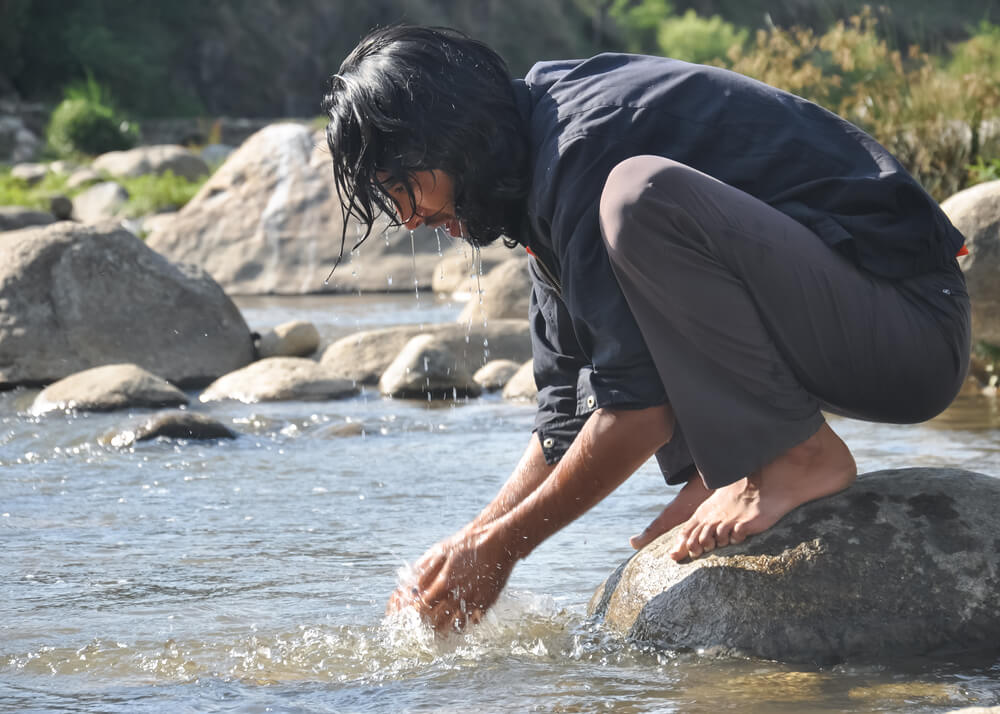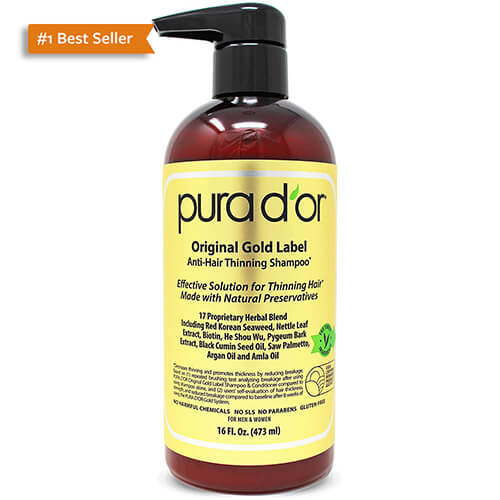Washing Your Hair While Healing Doesnt Have To Be Complicated. If you have ever had a deep cut, chances are you have had stitches or staples to help your wound stay closed. Stitches are supposed to be taken care of, but stitches on your head require extra attention.
Let’s say you recently had an accident that resulted in you getting stitches or staples in your head, but you have a camping trip coming up that you have been planning forever. You’re probably wondering if you will be able to wash your hair with shampoo on that trip to be able to get the smell of campfire out.
This article is only meant to be a guide to help you, not give medical advice. If you have stitches or staples in your head and aren’t sure what you should do about washing your hair, seek medical advice first. However, if you already spoke to a doctor, continue reading for some tips and information on how to make ‘caring’ for your scalp stitches a breeze.

Things to Consider First
You will need to consider a few factors before washing your hair if you have stitches or staples. A scalp laceration is a cut on the skin of your head, and you may need to follow some specific guidelines to reduce your risk of infection.
When you head home from visiting a provider for a cut, you will likely be provided with home treatment information and care instructions to help your wound remain closed. Your healthcare provider may send you home with a medicine list you can take if you are experiencing pain from the treatment.
First, think about how severe a wound you have. This will give you a good idea of how many stitches or staples you have (if your doctor didn’t inform you already). The more severe of an injury, the more stitches you will have.
You also need to consider if your cut or wounds has a dressing or not. If you do have a dressing over the stitches, is it waterproof?
The most important thing to consider is your doctor’s recommendation of care for your injury. Did they say when you can wash your hair? If not, it is best to call and ask your healthcare professional when you are allowed to shower.

How Long Do Scalp Stitches Take to Heal?
Usually, you can expect it to take between seven to fourteen days, but everyone and every injury is different. The slow healing time will depend on the size and location of the scalp laceration and how many stitches you have. Your doctor will be able to tell you how long until you get to come back for removal. They can also tell you who you can call when you have an emergency if they are not available.
Some ways you may be able to speed along your slow healing process are keeping the wound elevated and limit your activity as much as possible. Elevating the wound will decrease the pain and swelling you experience. Limit your activity by relaxing and taking it easy as much as you can. This will prevent blood from rushing to the wound and swelling.
How to Care for Hair with Stitches or Staples
Here are some crucial guidelines to follow when caring for and washing your hair with a scalp laceration.
You should make sure that your stitches stay dry for the first 24 to 48 hours. That means you can’t take a shower or bath at all during that time.
Your doctor or nurse will give you information and instructions on caring for the wound area properly, and you need to remember this recommendation at all times. If they say you can’t shower for 72 hours, you should follow that.
In most cases, you will be allowed to shower and wash your hair after the first 24 to 48 hours has passed. This is extra important if you have dressings because most of the time, they are not waterproof. This can cause water to leak through and increase infection risk.
You should only use a mild shampoo and make the process as quick as possible. Avoid using any products that contain Hydrogen Peroxide or alcohol because they may slow down your healing process. You should also avoid scrubbing around the wound because you could open the stitches.
You may need someone else to care for your cut during the healing process. This is because they will see the cut and be sure it is clean. Getting help from someone else is beneficial because they will be able to see and tell if the cut looks funny and requires a call to the doctor or not. They will also be able to help.
It would be best if you also didn’t rub your stitches with your towel when you get out of the shower. Gently pat your scalp around the wound to ensure the area is completely dry.
After you shower and your wound is clean (and, most importantly, dry), you can use any antibiotic cream that your doctor has recommended or prescribed to you.
Some health practicioners have suggested to use skin friendly petroleum jelly but using more petroleum jelly can become messy unless the hair around the injury has been doctor trimmed.
Finally, if you had a dressing on before washing your hair, apply it once again to cover the wound.
If one or more of your stitches or staples gets removed, call your doctor immediately. The precautions listed above are meant to prevent this from happening, but accidents happen.

Prevent Wet Stitches
Allowing the area to experience moisture may lead to an infection. The best way to prevent this is to avoid getting the site wet the best you can during the healing process.
There are several ways you can keep your stitches from getting wet while you are in the shower. You can apply Vaseline to the affected area to act as a water-repellant, find a water-resistant dressing (to a small degree), or use a plastic bag.
The first method is to put a thin layer of Vaseline on your wound. This product acts as a water repellent to keep the area from getting too wet, but it also will not cause any issues or infections of your wound.
You can also look for a dressing at the store that is water-resistant. It won’t hold up to a bunch of water, but it can handle the splashing that may occur. It would help if you didn’t allow the stitches to get excessively wet.
If you don’t have any Vaseline or can’t find any water-resistant dressings, you can use a plastic bag to cover your cut and keep the stitches dry.
When Stitches are Removed
After your stitches or staples are removed by your doctor, you can wash your hair like normal and go swimming if you want. You will still have to consider the instructions your doctor gives you for aftercare.
To be safe, you should still cover the cut with Vaseline to keep it clean if possible. Vaseline is the best choice for healing the skin because it will not put you at risk for an infection.
You should still avoid scrubbing your scalp as much as possible as a caution until your cut is completely healed. If you notice any blood after removal, immediately contact your doctor for instructions on what to do.
When is Medical Care Necessary?
You should contact your doctor right away for follow up care if you experience any of these symptoms:
- Redness, swelling, pus coming from the cut, or fever
- Excessive amount of blood
- Sudden numbness around the cut
- Bad or strange smell coming from the cut
- Worse pain than before or new pain
Monitoring your symptoms is extremely important for detecting any signs of infection. If you are in so much pain that taking prescription pain medicine isn’t working, that could also be a sign of infection, and you should be checked out immediately.
Conclusion
If you had a cut on your head that resulted in care from a doctor and getting stitches, you probably can’t wait until you can clean your scalp properly again. If you are fed up and can’t wait anymore, it is best to call your doctor to get proper instructions on how many days you have to wait before getting your cut wet.
If you recently received care from a healthcare provider for a scalp laceration that resulted in needing stitches or staples, but you are going on a trip, you may wonder how you can care for your cut and if you can wash your hair or not.
In most cases, you are good to go after two or three days, but healing could take longer in some cases. You should call your doctor for information on your specific situation.
After your doctor gives you the all-clear, you can use this guide to properly wash your cut to help the wound stay closed.








